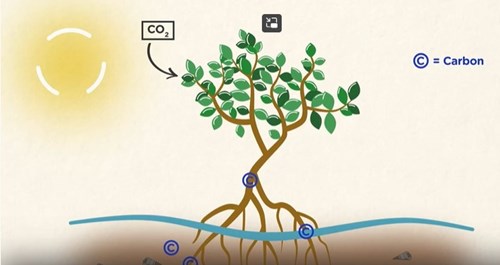
Investigating a blue carbon economy in the Northern Territory
Australia has some of the world’s largest blue carbon storage capacity, with 5–11% of global blue carbon soil stocks and 2–7% of annual soil carbon sequestration. Queensland, Northern Territory and Western Australia hold the largest area of tidal marshes (39%, 28%, and 25%, respectively) and mangroves (39%, 37%, and 20%, respectively) within Australia. Given their anoxic (no/low oxygen) sediment, blue carbon ecosystems can sequester up to as much as four times more carbon per hectare and store it 30-50 times faster than terrestrial forests.
This INPEX-led program seeks to complete research into blue carbon in the Northern Territory through the Ichthys Project Voluntary Offsets Agreement. The purpose of this research is to determine the potential of Northern Territory mangrove and saltmarsh communities for blue carbon sequestration and determine its economic viability as a method for accumulating Australian Carbon Credit Units. The research is phased, with the outcomes of each phase providing guidance for the next. The study is being implemented through a collaborative research partnership with Charles Darwin University, University of Queensland and the North Australian Indigenous Land and Sea Management Alliance Ltd (NAILSMA). Outcomes of the studies will be published and made publicly available.
Investigating a blue carbon economy in the Northern Territory |
||
| Publication | Date | Link |
| Blue Carbon in the Northern Territory, Australia. A review of the status and potential for blue carbon restoration |
2022 |
Click for report |
| Charles Darwin University Northern Territory Blue Carbon Research Strategy 2024-26 |
2024 |
Click for report |
| Charles Darwin University Northern Territory Blue Carbon Workshop Summary Report |
2024 |
Click for report |
Click here to watch a video about blue carbon research in the Northern Territory with INPEX Senior Environmental Advisor, Ben Davis.

